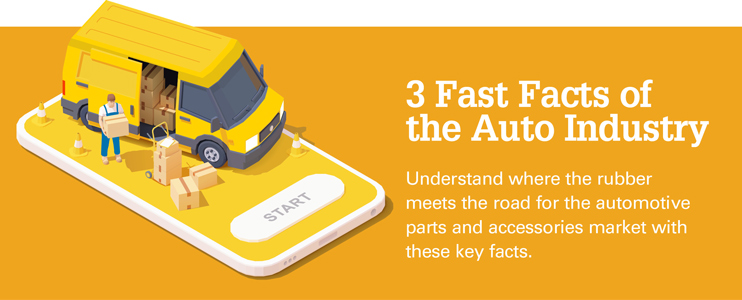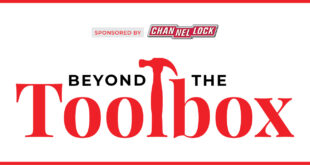Each category you add to your home improvement business can help expand your customer base, boost your sales and grow your local reputation. Automotive parts are no different.
From headlights to tail lights and everything in between, the category boasts a wide range of SKUs and price points.
Craig Milburn, owner of Summit True Value and NAPA in Haskell, Texas, says carrying automotive parts and accessories helps differentiate his business from competitors and helps stabilize sales.
“Many of our auto parts customers are DIYers, so they’re looking for a retailer who can match them with the parts they need,” he says. “Auto parts keep traffic up at the business and bring in new customers almost daily.”
Discover what it takes to manage a vast auto parts category and what you should know before adding it to your business.
The Road to Auto Parts
Milburn says his business didn’t always feature automotive parts. When he joined in the late 1980s, he worked as parts manager, overseeing the inventory for components for large farm equipment and machinery.
In the early 1990s, the team noticed the state of farming in Texas changing and diversified the operation by adding hardware and auto parts from their wholesaler and heavier-duty machinery from NAPA.
“Meeting the needs of the agricultural community was what our business was founded on,” Milburn says. “Agriculture was changing, we knew we had to meet our customers’ needs and offer them something different.”
Milburn explains farms in Texas have grown larger over the past few decades. In years past, a farmer could make a living with 1,000 or 2,000 acres, but today, most farmers oversee much more land. As farm sizes grew, the number of active farmers dwindled. The business’s customer base steadily shrunk.
“You have to adapt to the market, whatever that means in your region,” Milburn says. “That’s why we added auto parts. It was a way to keep the business going in an economy that had shifted. Tractors have water pumps and cooling systems, so many of the same parts as a regular automobile,” he says. “There’s definitely an overlap between farm equipment and automotive parts.”

Today, the business features auto inventory from NAPA and two hardware distributors. Milburn says actual machinery and auto parts often come from NAPA, but his wholesaler’s selection of auto care products and accessories has helped deepen the business’s product selection and profit margins.
“We buy auto parts from three vendors, so we have a lot of opportunities to compare prices on cleaning supplies, oils and other common items,” he says.
Because they source products from several places, the auto category is comprehensive. Customers can browse brakes, water pumps, cooling systems and transmissions, alongside polishes, waxes and small accessories.
One of the key ways Milburn finds new products for his automotive inventory is by staying aware of product updates from NAPA and other suppliers. He and his parts manager regularly review product catalogs to see what’s new in the category and how they can save customers time and money.
“I think looking to the suppliers for new product ideas is really helpful,” he says. “It’s important to know your customers, but you also need someone with outside eyes looking in and helping you understand trends in the category. When you’re inside your own business’s four walls, it’s hard to be completely aware of what’s changing in the category.”
In the Driver’s Seat
Milburn recommends thinking broadly about possible customers for auto parts.
“We work with some customers who build race cars,” he says. “We’re always working with them to learn about the parts they need to fulfill their hobby. The category can go in a lot of different directions.”
Milburn says his business is still heavy in machine parts for agricultural equipment, but that niche has declined in recent years.
One challenge of integrating automotive parts from a supplier like NAPA alongside hardware inventory is managing differing computer systems.
Milburn says his business currently uses two separate computer systems to manage inventory: one for auto parts from NAPA and one for hardware items.
Networking with industry peers helped Milburn learn how to troubleshoot common issues arising from the separate systems. Milburn says he learned tips and tricks to get the two systems working if not in tandem, at least harmoniously.
Like with other categories, ensuring your sales team is knowledgeable about products is crucial.
“If someone walked in wanting to paint a room, but they left my store only with a can of paint, that wouldn’t be a good transaction,” he says. “We’ve done them a disservice. By the same token, if someone comes in wanting a water pump but we don’t sell them any coolant or offer to check their hoses, we’ve also done that customer a disservice.”
To remedy that, Milburn tries to hire workers with an automotive background, but is always willing to train new employees or pair them with more experienced staff members when they begin.
For retailers who are considering adding automotive parts to their inventory, Milburn says not to sit idly by.
“Don’t just dip your toes into it,” he says. “Make your decision whether this is a category you want to add or not. Do it correctly or don’t do it at all.”
Milburn says when he first added auto parts, NAPA determined the exact inventory they would sell. Milburn operates in a rural west Texas community, so the initial inventory wasn’t tailored to the needs of his specific customer base.
“All that has to happen is for one customer to come in once looking for a specific product,” he says. “If you don’t have it, you won’t ever see them again.”
He says the business struggled early to meet customers’ specific needs, but over time, the inventory has come to match the community closely.
Milburn says many of his customers who take care of their own auto maintenance are extremely knowledgeable and have expectations for what retailers should carry.
“If you don’t have the products that are common for the cars in your community, you’re not going to be able to maintain traffic in your store,” he says. “You’ve got to be in the category or not.”

Online sales are picking up speed.
E-commerce sales for automotive parts are expected to reach $16 billion this year, representing more than 10 percent of the entire category.
Source: Hedges & Co.
Match the pace of delivery vehicles.
As demand for contactless delivery grows, so will demand for delivery vehicle parts and accessories. Ensure your inventory includes commercial-grade parts.
Source: KPMG
Meet customers at the starting line.
More than 90 percent of automotive parts shoppers research parts online before purchasing. Be sure your website includes a basic inventory overview and how-to information to capture these customers.
Source: Hedges & Co.
 Hardware Retailing The Industry's Source for Insights and Information
Hardware Retailing The Industry's Source for Insights and Information








